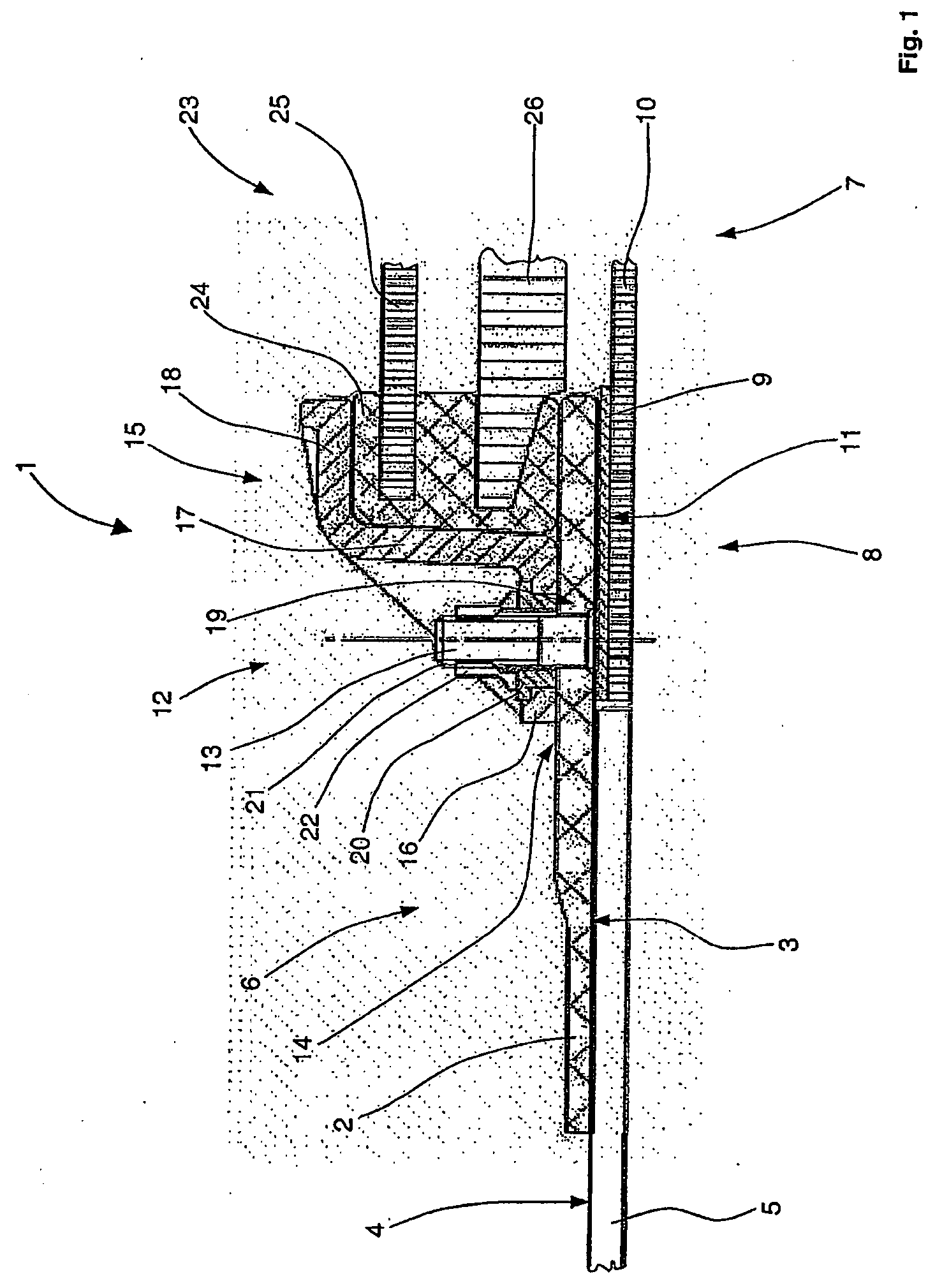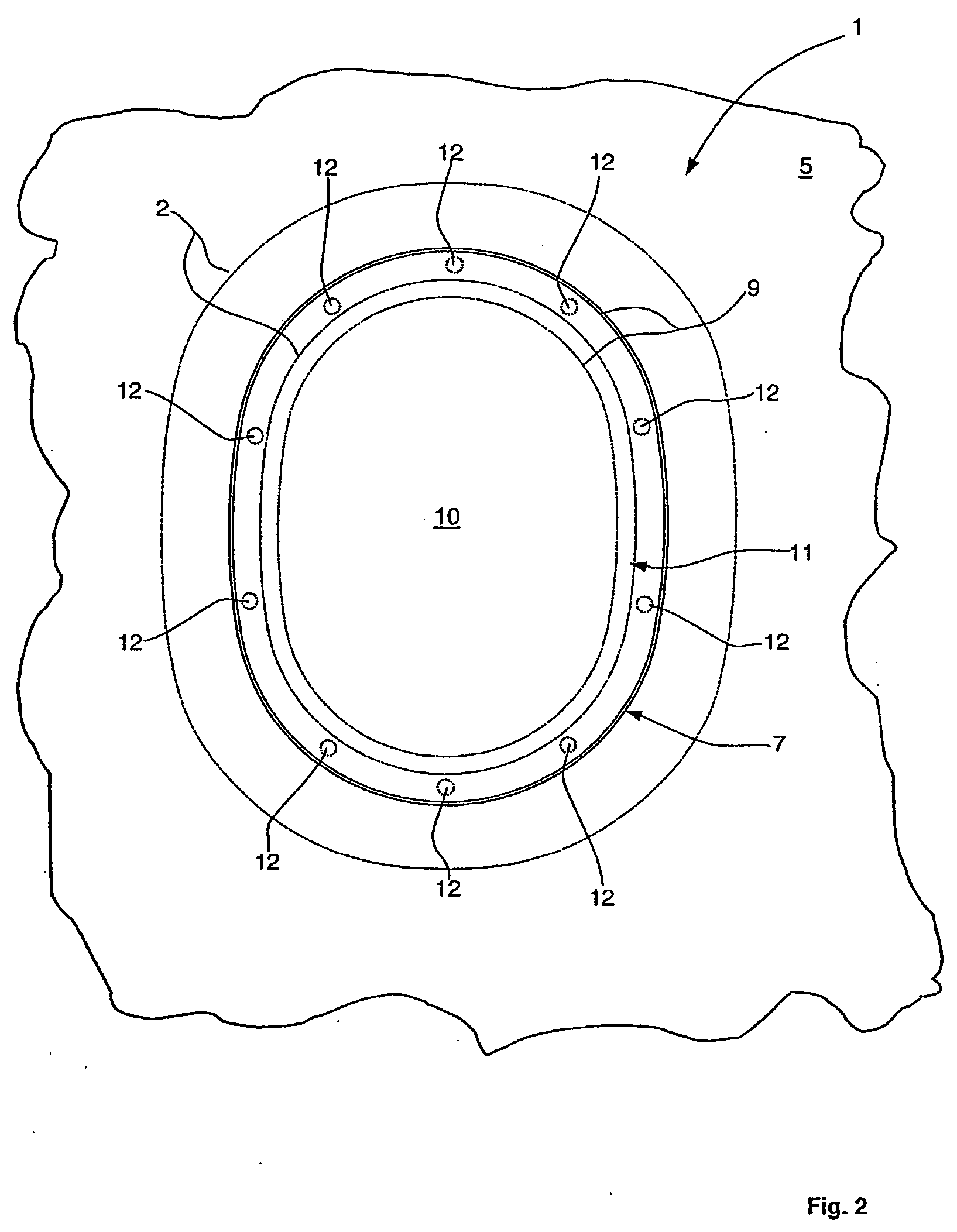Window element for insertion in a window aperture in an outer skin of a transport
a technology for window apertures and outer skins, applied in transportation and packaging, heating types, lighting and heating apparatus, etc., can solve the problems of aerodynamic disadvantage, increased drag, and known bulges or deformations of windows, and achieve the effect of reducing the deformation of the cover pane and ensuring the sealability with respect to the surrounding atmospher
- Summary
- Abstract
- Description
- Claims
- Application Information
AI Technical Summary
Benefits of technology
Problems solved by technology
Method used
Image
Examples
Embodiment Construction
[0026] As a result of previously indicated disadvantages of the of window elements, often used currently these are only suitable to a limited extent for use in aircraft having large dimensions and a large number of window elements resulting therefrom.
[0027]FIG. 1 illustrates a cross-section of a portion of a window element according to one embodiment of the invention. The window element 1 comprises a window frame 2 with a window-frame outer face 3. The window frame 2 has a substantially rectangular cross-sectional geometry. The window frame 2 according to the one embodiment of the invention based on known window elements for aircraft, substantially has an oval, circular, elliptical or angular or polygonal circumferential contour with optionally rounded edges, as illustrated in FIG. 2, for example.
[0028] In reference to FIG. 1, the window frame 2 rests with the window-frame outer face 3 partly on an outer-skin inner face 4 of an outer skin 5 in the edge area 6 of a window aperture ...
PUM
 Login to View More
Login to View More Abstract
Description
Claims
Application Information
 Login to View More
Login to View More - R&D
- Intellectual Property
- Life Sciences
- Materials
- Tech Scout
- Unparalleled Data Quality
- Higher Quality Content
- 60% Fewer Hallucinations
Browse by: Latest US Patents, China's latest patents, Technical Efficacy Thesaurus, Application Domain, Technology Topic, Popular Technical Reports.
© 2025 PatSnap. All rights reserved.Legal|Privacy policy|Modern Slavery Act Transparency Statement|Sitemap|About US| Contact US: help@patsnap.com



